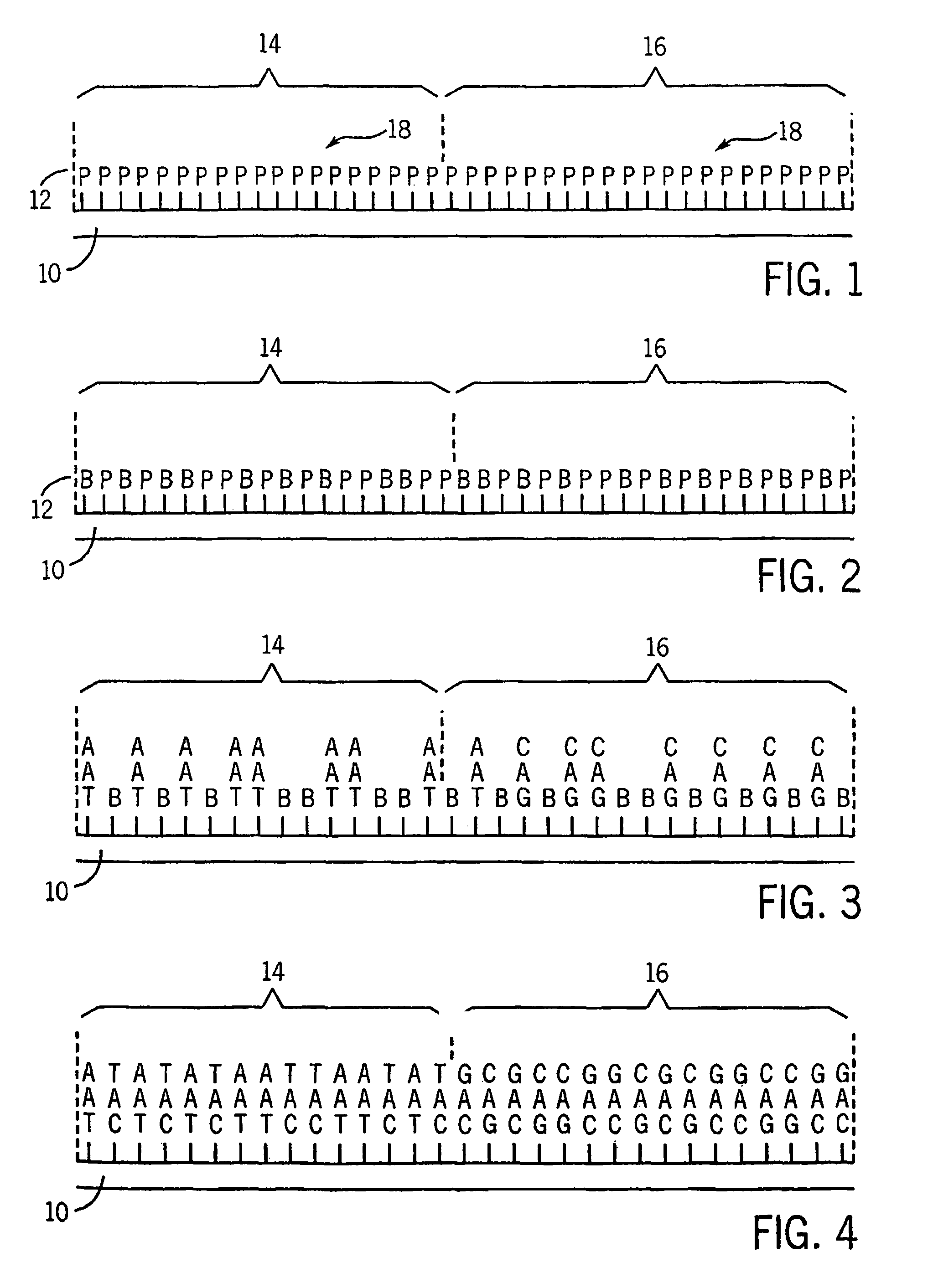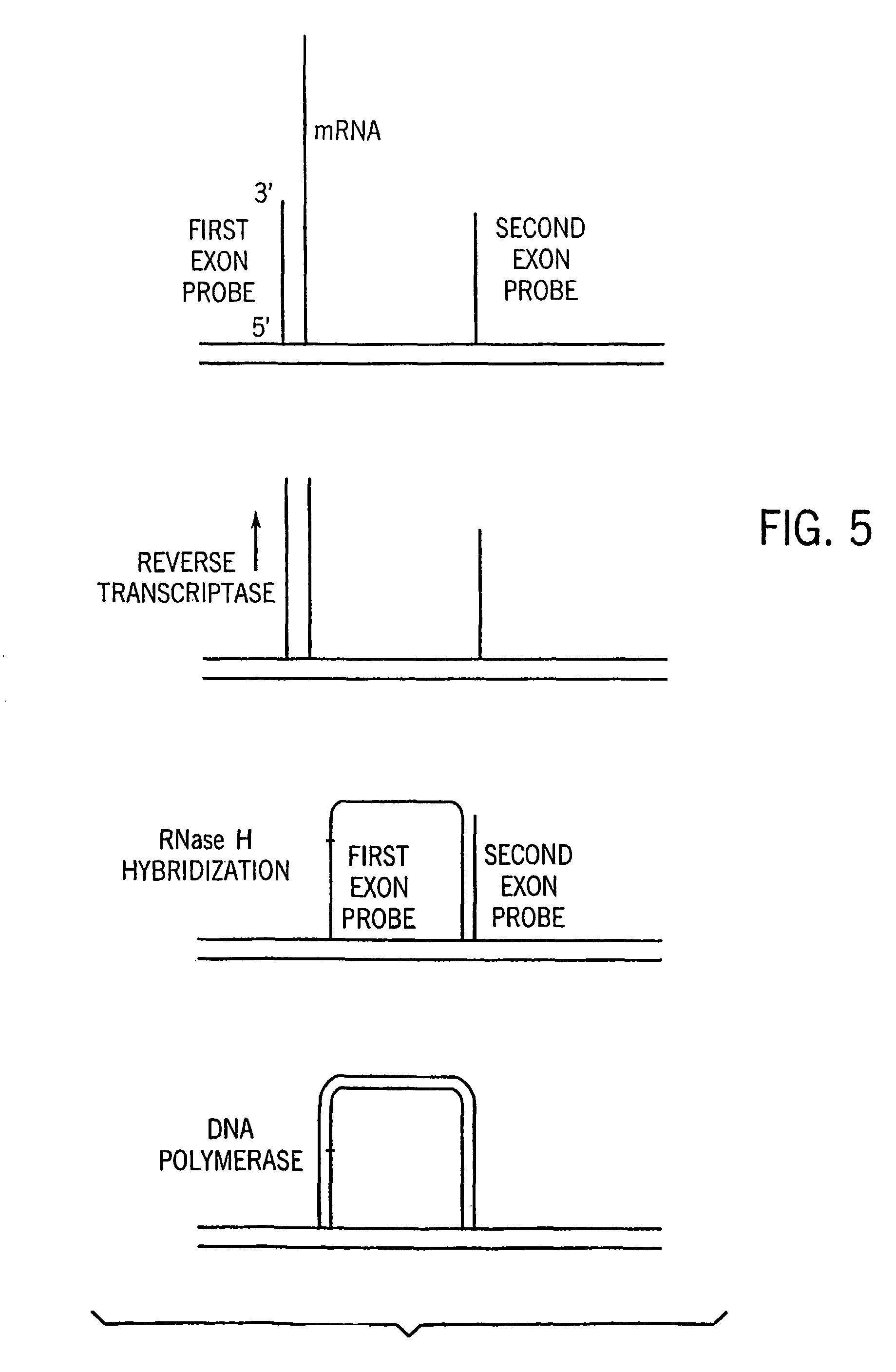Microarrays having multiple oligonucleotides in single array features
a technology of microarrays and oligonucleotides, applied in the field of dna microarray technology, can solve problems such as limiting the duration
- Summary
- Abstract
- Description
- Claims
- Application Information
AI Technical Summary
Benefits of technology
Problems solved by technology
Method used
Image
Examples
example 1
[0021]Using the methods described above and a maskless array synthesizer instrument, two oligonucleotides were synthesized in the same feature area using the method of the present invention, with the ratio of one oligonucleotide to the other varied horizontally across the array. The array was then hybridized with two oligonucleotides that were complementary to the array oligonucleotides. One of these oligonucleotides was labeled with Cy3, the other with Cy5. The resulting scan of the hybridized microarray to test samples revealed that the Cy3 oligo has increasing surface density from left to right, while the Cy5 oligo is increasing in density from right to left. The result were readily apparent in fluorescent imaging.
example 2
[0022]An array was designed having six 10×10 feature sections, with different oligonucleotides synthesized in common features of the array. Three different oligonucleotides were combined in all possible permutations in the array with each of the other oligonucleotides. Test samples of known sequence were then hybridized to the microarray thus made. Each sample hybridized only the specific area in which probes complementary to that sample had been synthesized.
PUM
| Property | Measurement | Unit |
|---|---|---|
| Fraction | aaaaa | aaaaa |
| Fraction | aaaaa | aaaaa |
| Time | aaaaa | aaaaa |
Abstract
Description
Claims
Application Information
 Login to View More
Login to View More - R&D
- Intellectual Property
- Life Sciences
- Materials
- Tech Scout
- Unparalleled Data Quality
- Higher Quality Content
- 60% Fewer Hallucinations
Browse by: Latest US Patents, China's latest patents, Technical Efficacy Thesaurus, Application Domain, Technology Topic, Popular Technical Reports.
© 2025 PatSnap. All rights reserved.Legal|Privacy policy|Modern Slavery Act Transparency Statement|Sitemap|About US| Contact US: help@patsnap.com



